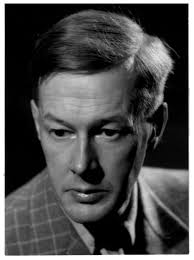St Michael’s Church, Lewes, Saturday 4 March 2017
St Michael’s is a fine venue for chamber music, almost too close for a full string orchestra but one which allows the warmth and detail of scoring to have maximum impact.
The evening opened with Bach’s Third Brandenburg concerto using reduced forces which encouraged bright rhythms and a dancelike quality throughout.
Robin Milford is not a familiar name today but the two pieces we heard both witnessed to a sad neglect of a fine composer.
The Concertino in E dates from 1955 and each of the three movements opens with a piano solo. Margaret Fingerhut has worked closely with the Musicians of All Saints as was evident from the easy rapport between orchestra and soloist. The work is openly romantic and the writing for strings confident in its expression. The central Romanza has a haunting melody which is richly orchestrated, and as such deserves to be far better known. The concluding Rondo is rather more on the wild side if not quite as moving as the earlier two movements.
Fishing by Moonlight is marginally better known, again deeply romantic, though there is little obvious link between what we hear and the title. The calm opening builds to a surprisingly loud impact and the danced central section makes a subtle contrast to the outer sections. The work is available on Hyperion and it would be good to think that others, as well as the Robin Milford Trust, might take up these works.
Bartok’s Divertimento for string orchestra is a much tougher item. There is a fierce intensity to the opening Allegro non troppo which gives way to the intense, quietly oppressive, Molto adagio. If the mood lightens a little for the final Allegro assai there is still a hint of menace behind the melody.
Leader Sophia Bartlette provided the solo violin parts in the Divertimento with a pleasing sense of attack and phrasing.
Peter Copley had spoken at the beginning about the relationship of light music to serious music, and the continuing confusion about the terminology. Robin Milford’s works could easily be dismissed as light music when what the critic really means is they are actually accessible on a first hearing! Peter Copley’s own scores have the virtue of accessibility but should not be dismissed as light as a result. His new Tango is a most enjoyable piece but I suspect rather more challenging for the performers than it sounds for the audience. The tight rhythms and constant subtle changes of pace are exhilarating and were obviously enjoyed by both orchestra and pianist. Margaret Fingerhut did not need to change into her sparkling silver sequins to add a Latin tang to the event – it was more than obvious from the sparkle of the music.
The next concert at St Michael’s will be on 23 April at 4.30pm and will present the winners of the Brighton 2017 Springboard Festival.
www.mas-lewes.co.uk www.robinmilfordtrust.org.uk

